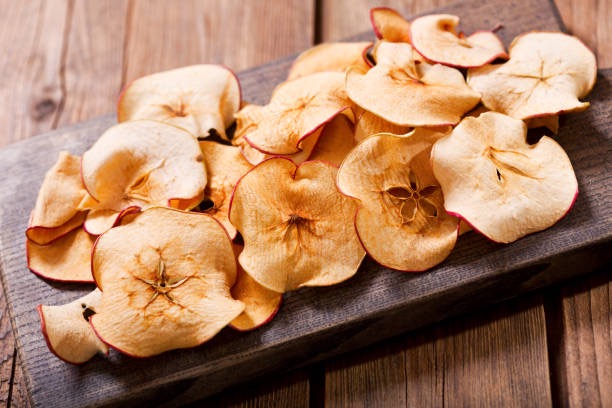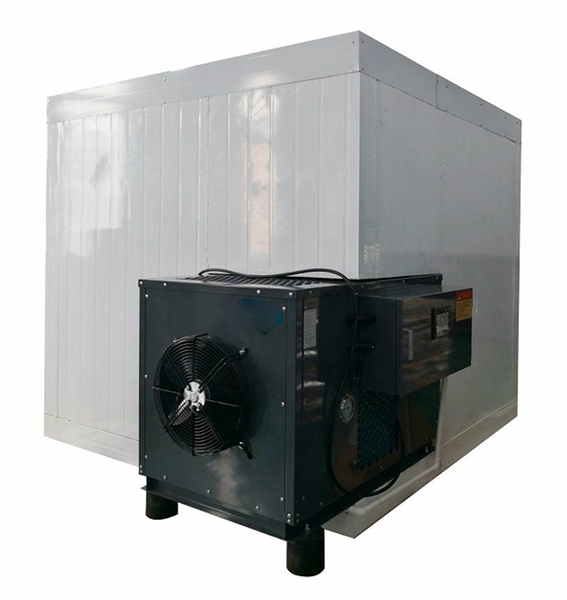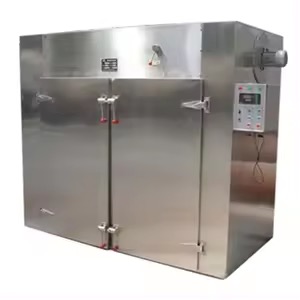
Content Menu
● Understanding Heat Pump Dryers
● Advantages of Heat Pump Dryers
● Applications in Food Industry
● Key Features of Heat Pump Dryers
● How Heat Pump Dryers Work
● Comparative Analysis with Other Drying Technologies
● Challenges and Considerations
● Future Trends in Heat Pump Technology
● Conclusion
● FAQ
>> 1. What is a heat pump dryer?
>> 2. How does a heat pump dryer differ from traditional dryers?
>> 3. Can heat pump dryers be used for all types of food?
>> 4. Are there any downsides to using a heat pump dryer?
>> 5. How much can I save on energy costs with a heat pump dryer?
● Citations:
In the food processing industry, choosing the right drying technology is crucial for maintaining product quality while minimizing energy consumption. Among the various drying methods available, heat pump dryers have emerged as a leading choice for energy efficiency. This article explores the advantages of heat pump dryers, particularly in the context of food drying, and why they are considered the best option for energy efficiency.

Understanding Heat Pump Dryers
Heat pump dryers operate on a principle similar to that of refrigerators, utilizing a closed-loop system to transfer heat. Unlike traditional dryers that generate heat through electric resistance or gas combustion, heat pump dryers extract heat from the environment and use it to evaporate moisture from food products. This process not only conserves energy but also allows for precise temperature control.
The basic components of a heat pump dryer include:
- Evaporator: Absorbs heat from the environment.
- Compressor: Increases the temperature of the absorbed heat.
- Condenser: Releases the heat into the drying chamber.
- Expansion Valve: Regulates the flow of refrigerant within the system.
This cycle allows for continuous moisture removal while maintaining optimal drying conditions.
Advantages of Heat Pump Dryers
1. High Energy Efficiency
Heat pump dryers are renowned for their energy efficiency. They can reduce energy consumption by 40-50% compared to conventional drying methods. This is achieved by recycling hot air within the system, which minimizes the need for external heating sources.
2. Cost-Effectiveness
Although the initial investment in a heat pump dryer might be higher than traditional options, the long-term savings on energy bills can be substantial. Over time, these savings offset the higher upfront costs.
3. Precise Temperature Control
One of the standout features of heat pump dryers is their ability to maintain consistent temperatures throughout the drying process. This is crucial for preserving the quality of sensitive food products, ensuring that they retain their flavor, texture, and nutritional value.
4. Nutrient Retention
The gentle drying process employed by heat pump dryers helps to retain essential nutrients in food products. Unlike high-temperature drying methods that can degrade vitamins and minerals, heat pump technology operates at lower temperatures, making it ideal for drying fruits and vegetables.
5. Reduced Drying Time
Heat pump dryers facilitate faster drying times due to their efficient moisture removal capabilities. This is particularly beneficial for perishable items that require quick processing to maintain quality.
6. Extended Shelf Life
By effectively removing moisture from food products, heat pump dryers inhibit the growth of bacteria and molds, significantly extending shelf life. This makes them an excellent choice for manufacturers looking to enhance product longevity.
7. Environmental Impact
Heat pump dryers are eco-friendly alternatives to traditional drying methods. They produce fewer emissions and reduce reliance on fossil fuels due to their high energy efficiency, contributing to a lower carbon footprint.
Applications in Food Industry
Heat pump dryers are versatile and can be used across various sectors within the food industry:
- Fruits and Vegetables: Ideal for preserving freshness and nutrients.
- Meat and Seafood: Effective in maintaining quality while extending shelf life.
- Herbs and Spices: Gentle drying ensures flavor retention without degradation.
- Grains and Legumes: Efficiently dries grains while preventing spoilage.
- Dairy Products: Suitable for drying milk powders while retaining nutritional properties.

Key Features of Heat Pump Dryers
When selecting a heat pump dryer for food processing, consider the following features:
- Energy Rating: Look for models with high energy efficiency ratings.
- Capacity: Choose a dryer that meets your production needs.
- Temperature Control Systems: Ensure it has advanced controls for optimal drying conditions.
- Maintenance Requirements: Select models that are easy to clean and maintain.
- Automation Features: Some advanced models offer automated settings that optimize drying cycles based on moisture levels.
How Heat Pump Dryers Work
To further understand why heat pump dryers are so efficient, it's important to delve into their operational mechanics.
1. Heat Absorption: The evaporator unit absorbs ambient air and extracts moisture from it while also capturing latent heat.
2. Compression Cycle: The compressor increases the pressure of this vaporized refrigerant, raising its temperature significantly.
3. Heat Transfer: The hot refrigerant then passes through the condenser where it releases its heat into the drying chamber, warming up the air inside which facilitates moisture evaporation from food products.
4. Cooling Cycle: After releasing its heat, the refrigerant cools down and returns to liquid form before passing through an expansion valve that reduces its pressure again, completing the cycle.
This continuous cycle allows for effective moisture removal without excessive energy consumption.
Comparative Analysis with Other Drying Technologies
To appreciate fully why heat pump dryers are superior in terms of energy efficiency, let's compare them with other common drying technologies:
| Feature | Heat Pump Dryer | Conventional Dryer | Solar Dryer |
| Energy Efficiency | High | Moderate | Variable |
| Initial Cost | Higher | Lower | Low |
| Operational Cost | Low | High | Free |
| Moisture Control | Excellent | Limited | Variable |
| Environmental Impact | Low | Moderate | Low |
| Drying Time | Moderate | Fast | Slow |
From this comparison, it's evident that while conventional dryers may offer faster results initially, they come at a higher operational cost and environmental impact compared to heat pump dryers. Solar dryers provide an eco-friendly option but are heavily reliant on weather conditions and may not be suitable for all geographical areas or during all seasons.
Challenges and Considerations
While heat pump dryers offer numerous advantages, there are some challenges to consider:
- Initial Investment Cost: The upfront cost can be significant compared to conventional options; however, this should be viewed as a long-term investment due to savings on energy bills.
- Complexity of Maintenance: While generally reliable, these systems can require specialized knowledge for repairs and maintenance compared to simpler traditional systems.
- Drying Time Variability: Depending on environmental conditions such as humidity levels and temperature, drying times can vary more than with conventional methods.
Future Trends in Heat Pump Technology
The future of heat pump technology looks promising with ongoing advancements aimed at improving efficiency even further:
- Smart Technology Integration: Incorporating IoT (Internet of Things) technology allows users to monitor and control their dryers remotely via smartphones or computers.
- Enhanced Materials: Development of advanced materials in construction could lead to lighter units with better insulation properties, improving overall efficiency.
- Hybrid Systems: Combining heat pumps with other renewable technologies such as solar panels could further reduce operational costs and environmental impact.
Conclusion
In conclusion, heat pump dryers represent a significant advancement in food drying technology. Their high energy efficiency, cost-effectiveness, precise temperature control, and positive environmental impact make them an ideal choice for food manufacturers aiming to improve their processes while maintaining product quality. As the demand for sustainable practices grows within the food industry, investing in heat pump dryer technology will become increasingly advantageous.

FAQ
1. What is a heat pump dryer?
A heat pump dryer is an appliance that uses a refrigeration cycle to dry clothes or food by extracting moisture from them while reusing hot air within a closed-loop system.
2. How does a heat pump dryer differ from traditional dryers?
Unlike traditional dryers that generate heat through electric resistance or combustion, heat pump dryers recycle existing air and operate at lower temperatures, making them more energy-efficient.
3. Can heat pump dryers be used for all types of food?
Yes, heat pump dryers are versatile and can effectively dry various types of food products including fruits, vegetables, meats, and herbs while preserving their nutritional value.
4. Are there any downsides to using a heat pump dryer?
While they have many advantages, heat pump dryers typically have longer drying times compared to conventional methods due to their lower operating temperatures.
5. How much can I save on energy costs with a heat pump dryer?
Users can expect to save between 40-50% on energy costs compared to traditional dryers due to their efficient operation and recycling of hot air.
Citations:
[1] https://www.homebeautiful.com.au/laundry-ideas/best-heat-pump-clothes-dryers/
[2] https://www.barnalab.com/en/blog/energy-efficiency-in-freeze-drying/
[3] https://vn.dryers-dehydrators.com/info/advantage-of-food-heat-pump-dryer-81163580.html
[4] https://www.ike.cn/video
[5] https://www.youtube.com/watch?v=DeN-h6opueM
[6] https://www.mumsnet.com/swearsby/best-heat-pump-tumble-dryers
[7] https://edepot.wur.nl/180045
[8] http://sciencebeingjournal.com/sites/default/files/Octa%20J.%20Biosci.%20Vol.%2010%20(2)124-133_0.pdf
[9] https://www.youtube.com/watch?v=mtDzdYoyeR8
[10] https://www.youtube.com/watch?v=S-hDpODzIV0











